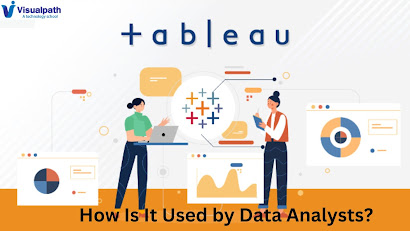Difference Between Data Analytics and Data Visualization
Introduction:
Data Analytics stands tall as the cornerstone of
informed choices and strategic maneuvers. However, within the realm of data
analytics, there exist distinct categories that serve different purposes:
descriptive analytics and predictive analytics. - Data
Analytics Online Training
Descriptive
Analytics:
Descriptive
analytics primarily focuses on interpreting historical data to unveil patterns,
trends, and anomalies. It serves as the foundational layer of data analytics,
providing organizations with insights into what has occurred within a specified
timeframe. Through various statistical and visualization techniques,
descriptive analytics transforms raw data into comprehensible narratives,
enabling stakeholders to comprehend past occurrences accurately.
One of the
fundamental tools in descriptive analytics is data aggregation, which involves
gathering data from multiple sources and summarizing it to extract meaningful
information. - Data
Analytics Training in Hyderabad
Predictive
Analytics:
In stark
contrast to descriptive analytics, predictive analytics transcends the
boundaries of historical data analysis to
forecast future outcomes. It harnesses advanced statistical models, machine
learning algorithms, and artificial intelligence (AI) to anticipate potential
scenarios based on historical data patterns and trends.
Predictive
analytics employs a plethora of techniques, including regression analysis, time
series forecasting, and classification algorithms, to extrapolate future trends
and behaviors. By identifying hidden patterns within vast datasets, predictive
analytics enables organizations to anticipate market fluctuations, customer
preferences, and operational risks.
One of the
key advantages of predictive analytics lies in its ability to optimize
decision-making processes by providing probabilistic forecasts and scenario
analyses. - Data Analysis Online
Training Course
Key Differences and
Complementary Roles:
While
descriptive and predictive
analytics serve distinct purposes, they are not mutually exclusive;
instead, they complement each other in the broader spectrum of data analytics.
Descriptive analytics lays the groundwork by providing historical context and
elucidating past trends, which serves as invaluable input for predictive
modeling.
On the other
hand, predictive analytics builds upon the insights derived from descriptive
analytics, extrapolating future trends and facilitating proactive
decision-making.
Conclusion:
In
conclusion, the dichotomy between descriptive and predictive analytics
underscores the multifaceted nature of data analytics. While descriptive
analytics illuminates the past and explicates historical trends, predictive
analytics peers into the future, empowering organizations to anticipate and
adapt to changing dynamics.
Visualpath is the Leading and Best Institute for learning Data Analytics
Online in Ameerpet, Hyderabad. We provide Data Analytics Online Training Course, and you will get the best course at an affordable cost.
Attend Free Demo
Call on - +91-9989971070.
Visit : https://www.visualpath.in/data-analytics-online-training.html
Blog : https://dataanalyticsonlinecourse.blogspot.com




Comments
Post a Comment